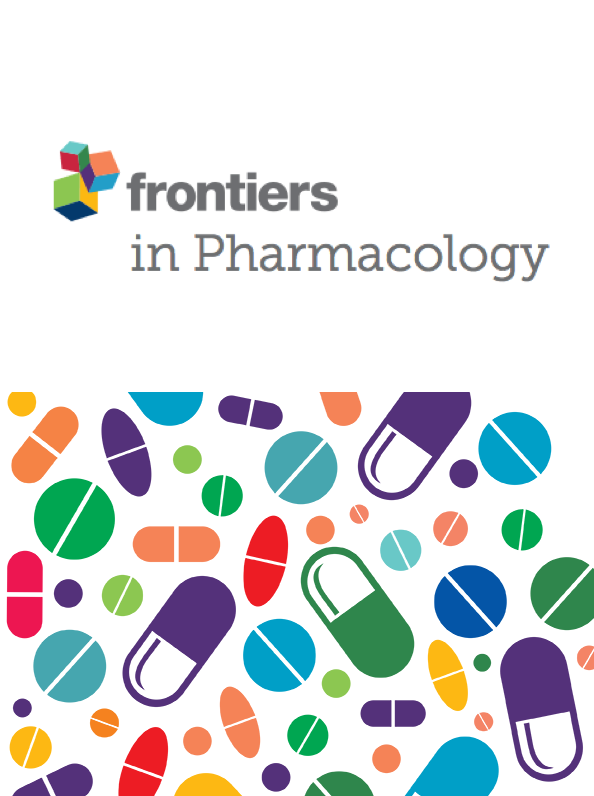Computational and in vitro evaluation of sumac-derived © Rutan compounds towards Sars-CoV-2 Mpro inhibition.
Muzaffar Kayumov, Parthiban Marimuthu, Jamoliddin Razzokov, Nurkhodja Mukhamedov, Akmal Asrorov, Nodir S Berdiev, Jamolitdin F Ziyavitdinov, Ansor Yashinov, Yuliya Oshchepkova, Shavkat Salikhov, Sharafitdin Mirzaakhmedov
下载PDF
{"title":"Computational and <i>in vitro</i> evaluation of sumac-derived <sup>©</sup>Rutan compounds towards Sars-CoV-2 M<sup>pro</sup> inhibition.","authors":"Muzaffar Kayumov, Parthiban Marimuthu, Jamoliddin Razzokov, Nurkhodja Mukhamedov, Akmal Asrorov, Nodir S Berdiev, Jamolitdin F Ziyavitdinov, Ansor Yashinov, Yuliya Oshchepkova, Shavkat Salikhov, Sharafitdin Mirzaakhmedov","doi":"10.3389/fphar.2025.1518463","DOIUrl":null,"url":null,"abstract":"<p><p>The emergence of the SARS-CoV-2 virus caused the COVID-19 outbreak leading to a global pandemic. Natural substances started being screened for their antiviral activity by computational and <i>in-vitro</i> techniques. Here, we evaluated the anti-SARS-CoV-2 main protease (M<sup>pro</sup>) efficacy of <sup>©</sup>Rutan, which contains five polyphenols (R5, R6, R7, R7', and R8) extracted from sumac <i>Rhus coriaria</i> L. We obtained three fractions after large-scale purification: fraction 1 held R5, fraction 2 consisted of R6, R7 and R7', and fraction 3 held R8. <i>In vitro</i> results showed their anti-M<sup>pro</sup> potential: IC<sub>50</sub> values of R5 and R8 made 42.52 µM and 5.48 µM, respectively. Further, we studied M<sup>pro</sup>-polyphenol interactions by <i>in silico</i> analysis to understand mechanistic extrapolation of Rutan binding nature with M<sup>pro</sup>. We extensively incorporated a series of <i>in silico</i> techniques. Initially, for the docking protocol validation, redocking of the co-crystal ligand GC-376* to the binding pocket of M<sup>pro</sup> was carried out. The representative docked complexes were subjected to long-range 500 ns molecular dynamics simulations. The binding free energy (BFE in kcal/mol) of components were calculated as follows: R8 (-104.636) > R6 (-93.754) > R7' (-92.113) > R5 (-81.115) > R7 (-67.243). <i>In silico</i> results of R5 and R8 correspond with their <i>in vitro</i> outcomes. Furthermore, the per-residue decomposition analysis showed C145, E166, and Q189 residues as the hotspot residues for components contributing to maximum BFE energies. All five components effectively interact with the catalytic pocket of M<sup>pro</sup> and form stable complexes that allow the estimation of their inhibitory activity. Assay kit analyses revealed that Rutan and its components have effective anti-SARS-CoV-2 M<sup>pro</sup> inhibitory activity.</p>","PeriodicalId":12491,"journal":{"name":"Frontiers in Pharmacology","volume":"16 ","pages":"1518463"},"PeriodicalIF":4.4000,"publicationDate":"2025-02-04","publicationTypes":"Journal Article","fieldsOfStudy":null,"isOpenAccess":false,"openAccessPdf":"https://www.ncbi.nlm.nih.gov/pmc/articles/PMC11832515/pdf/","citationCount":"0","resultStr":null,"platform":"Semanticscholar","paperid":null,"PeriodicalName":"Frontiers in Pharmacology","FirstCategoryId":"3","ListUrlMain":"https://doi.org/10.3389/fphar.2025.1518463","RegionNum":2,"RegionCategory":"医学","ArticlePicture":[],"TitleCN":null,"AbstractTextCN":null,"PMCID":null,"EPubDate":"2025/1/1 0:00:00","PubModel":"eCollection","JCR":"Q1","JCRName":"PHARMACOLOGY & PHARMACY","Score":null,"Total":0}
引用次数: 0
引用
批量引用
Abstract
The emergence of the SARS-CoV-2 virus caused the COVID-19 outbreak leading to a global pandemic. Natural substances started being screened for their antiviral activity by computational and in-vitro techniques. Here, we evaluated the anti-SARS-CoV-2 main protease (Mpro ) efficacy of © Rutan, which contains five polyphenols (R5, R6, R7, R7', and R8) extracted from sumac Rhus coriaria L. We obtained three fractions after large-scale purification: fraction 1 held R5, fraction 2 consisted of R6, R7 and R7', and fraction 3 held R8. In vitro results showed their anti-Mpro potential: IC50 values of R5 and R8 made 42.52 µM and 5.48 µM, respectively. Further, we studied Mpro -polyphenol interactions by in silico analysis to understand mechanistic extrapolation of Rutan binding nature with Mpro . We extensively incorporated a series of in silico techniques. Initially, for the docking protocol validation, redocking of the co-crystal ligand GC-376* to the binding pocket of Mpro was carried out. The representative docked complexes were subjected to long-range 500 ns molecular dynamics simulations. The binding free energy (BFE in kcal/mol) of components were calculated as follows: R8 (-104.636) > R6 (-93.754) > R7' (-92.113) > R5 (-81.115) > R7 (-67.243). In silico results of R5 and R8 correspond with their in vitro outcomes. Furthermore, the per-residue decomposition analysis showed C145, E166, and Q189 residues as the hotspot residues for components contributing to maximum BFE energies. All five components effectively interact with the catalytic pocket of Mpro and form stable complexes that allow the estimation of their inhibitory activity. Assay kit analyses revealed that Rutan and its components have effective anti-SARS-CoV-2 Mpro inhibitory activity.


